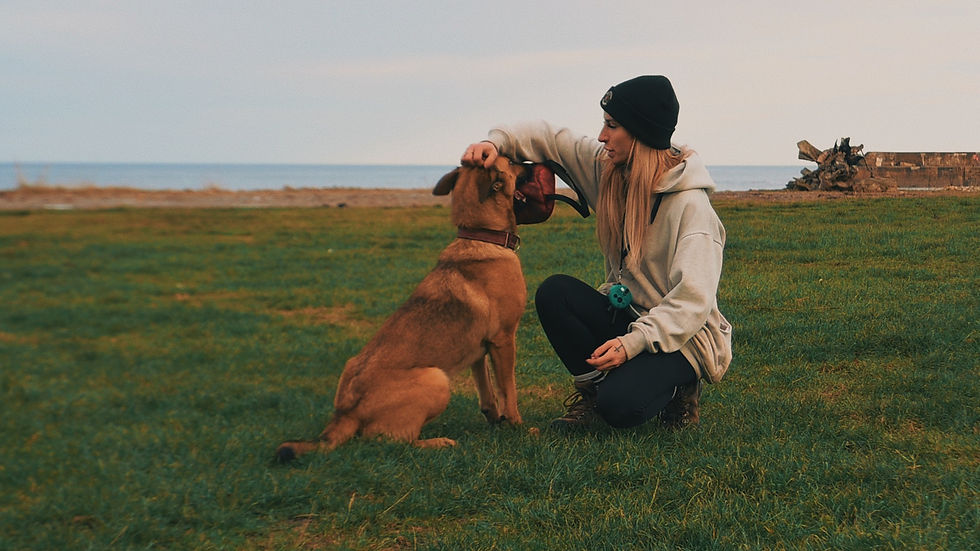Why I Don’t Use the E-Collar as a “Last Resort” In Dog Training
- pawsnclawstraining
- Sep 26
- 2 min read

When people hear I use e-collars in my training programs, some assume I bring them out as a last resort, when nothing else works, when the dog is totally out of control, or when recall has already failed 100 times.
But that couldn’t be further from the truth.
In fact, I use the e-collar before I ever need it. Not because I’m being lazy. Not because the dog doesn’t know what I’m asking. But because they do.
Layering It In, Before the Problems Begin Once a dog has motivation, play drive, and a solid understanding of their obedience. Things like heel, recall, settle, and more. That’s when I start layering the e-collar, if it's suitable for that dog. Not when they’ve already proven to be unreliable.
At this stage, I’m not trying to “fix” anything. I’m preparing the dog (and the owner) for freedom.
Because here’s the truth: dogs are animals. Even the best-trained dog still has prey drive, instinct, and the potential to chase, bolt, or ignore you in the heat of the moment. And if we wait until they’ve rehearsed those behaviours 50 times, we’re already behind.
Freedom Comes with Backup
Think of it like a seatbelt. You don’t put it on after the crash. You wear it in case the crash happens.The e-collar, when used correctly, is no different.
By layering it before we need it. Gently, clearly, with full understanding and fairness, we’re setting up the dog for success. We’re giving them more freedom, not less. Because now, when the lead comes off, you’ve got the backup you need. If they make a choice that puts them at risk (or wildlife, or other dogs), you have a way to bring them back - no yelling, no panic, no games of chase.
Avoiding the Pattern of Self-Reinforcement
When owners wait until a dog has ignored recall 100 times before reaching for tools like an e-collar, they’re working against a dog who has already learned that ignoring them works. That chasing deer feels amazing. That coming back is optional.
The longer that pattern continues, the harder it is to break.
When we add the e-collar as a communication tool, not a punishment, we interrupt that cycle before it starts. The dog learns that even off lead, reinforcement comes from you not from the environment.
It’s Not About Control, It’s About Clarity
Using the e-collar isn’t about dominating your dog or controlling them with a remote. It’s about giving clear, consistent communication that backs up everything they already know. And in doing that, we can give them more freedom, more safety, and more trust.
We owe it to our dogs to prepare them for the real world.
Final Thoughts
If you're curious about how e-collar training could look for your dog, it’s worth exploring it with the right foundation in place. It’s not a shortcut, and it’s not a punishment. It’s a tool, and like any tool, how and when you use it makes all the difference.




Comments